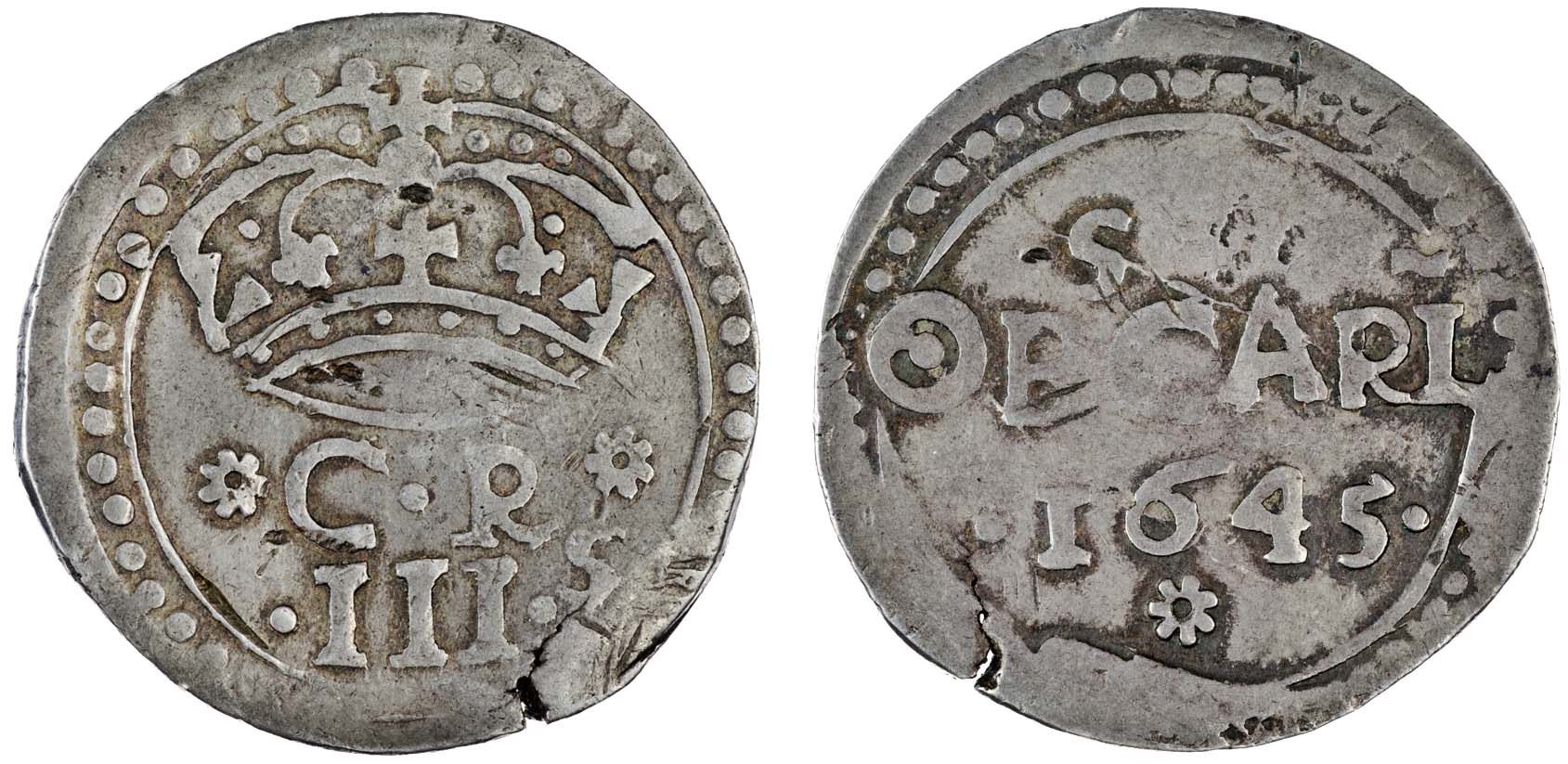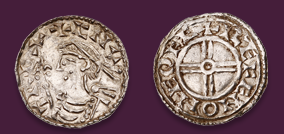
Auction: 12009 - The Magnus Collection, Ancient, English & Foreign Coins and Commemorative Medals
Lot: 960
Charles I, Civil War coinages, Carlisle besieged, 1644-45, round Three Shillings, 16.03g, cr, a rosette either side, large crown above, .iii.s below, all within inner circle around which a circle of pellets, rev. two line inscription, obs carl/.1645., rosette below (Brooker 1218; N.2634; S.3136), small flan split at 5 o´clock, well centred with good detail, possibly the finest known example of this extremely rare siege piece, about very fine Estimate £ 20,000-25,000 provenance Bt. Spink, July 1979 Carlisle, under the command of Sir Thomas Glemham for the King, was besieged by the Scots from October 1644 until June 25 1645, when it surrendered to David Leslie, later Lord Newark. The siege took the form of a blockade with a shortage of food leading to a decision to surrender when the prospect of relief disappeared after the royalist defeat at Naseby on June 14 1645. Following the surrender, the seven hundred defenders were allowed to leave. An account of the siege by a citizen of Carlisle at the time notes that at the end of 1644 all the corn in the town was taken and put into stores and at the same time an order was issued asking every citizen to bring their plate, as the writer adds ´to be coyned, which they did chearfully.´ This was turned into Three Shilling and Shilling coins under the authority of the garrison commanders. In all 1,162 oz of plate worth £280-11s-10 1/2d was coined producing £323 worth of coins. Nelson suggested that this was divided into 1000 Three Shilling coins and around 3,460 Shillings making the Three Shilling coin much rarer than the Shilling. It seems the coins were issued on May 30 1645 and so circulated for around one month only. The Three Shilling exists in two varieties, a three line and a two line reverse. The latter, of which we offer an example here, is the rarer of the two.
Sold for
£22,000




